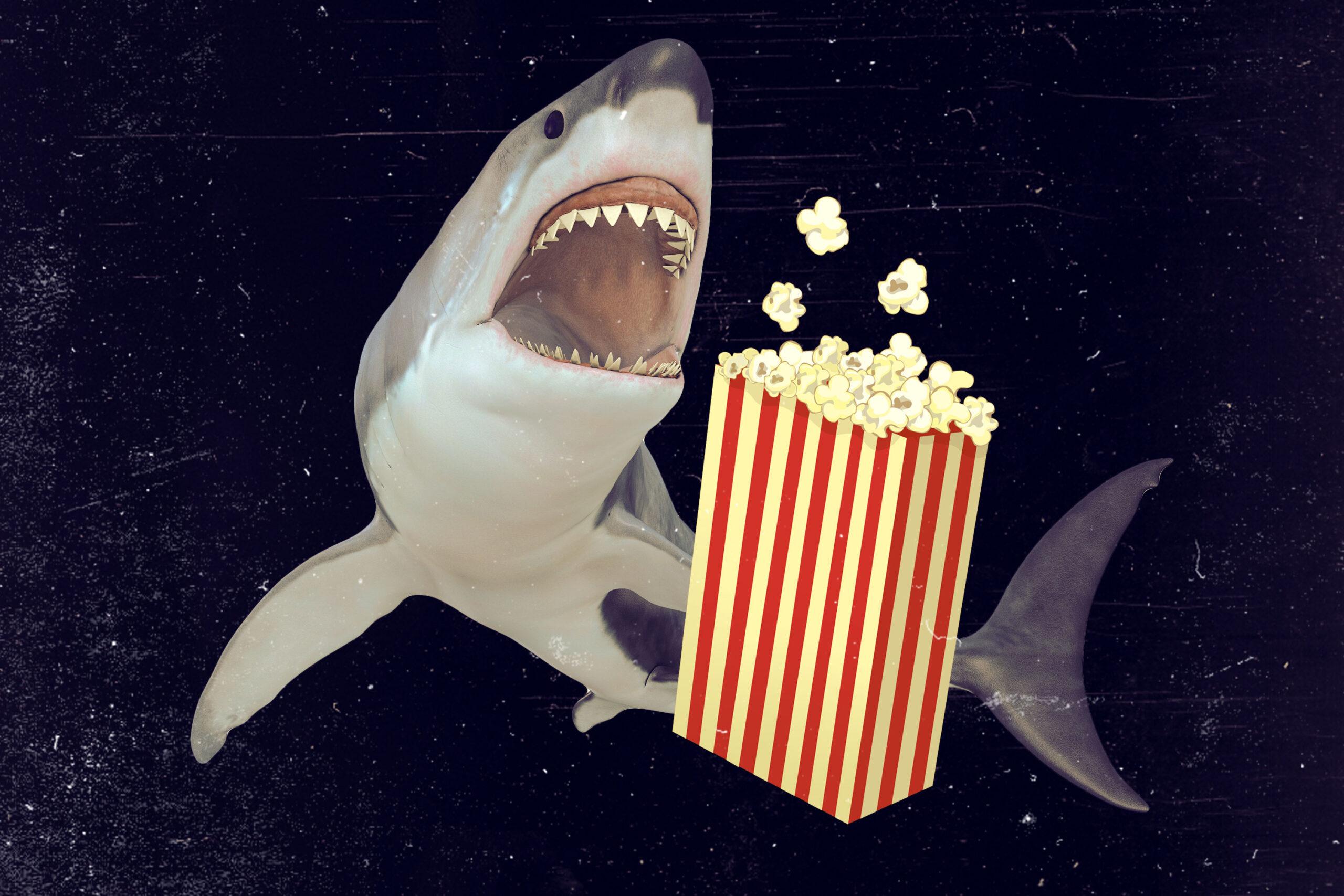
We had to wait until the middle of August for a non-sequel to top the box office during a summer weekend—but what finally broke through certainly made a splash. After being projected to make only a small dent in its first weekend in theaters, The Meg ended up taking a massive bite out of North American ticket sales. (Sorry, I’ll stop with the shark puns—maybe.) Warner Bros’ Jaws-meets-Jurassic-Park flick, which most analysts predicted would launch in the $20 million range domestically, more than doubled its anticipated output with a $44.5 million debut, far exceeding the third weekend of Mission: Impossible—Fallout, which earned around $20 million, and Disney’s Christopher Robin, which took in $12.4 million in its second weekend. The Meg—which pits a 70-foot, prehistoric megalodon against Jason Statham’s abs, a losing battle for the poor shark—made an additional $97 million overseas, meaning that after one weekend, the movie has almost turned a profit on its massive, nearly $200 million production and marketing budget.
The success of The Meg is due to several things—a lack of competition, a warm audience response, and a great excuse to avoid the summer heat—but two factors played the largest roles. First, the marketing for The Meg made the ambitious gambit of playing the entire premise for laughs. Instead of harping on the horror of a giant predator lurking in the ocean, The Meg’s trailer and subsequent posters—the best of which played off of an iconic Jaws poster—leaned into the knowing humor and inherent silliness of the shark subgenre. With taglines like “Chomp on this” and “Pleased to eat you,” The Meg was, in essence, presented as more of a high-end Sharknado than a Jawslike swing, and perhaps that’s exactly what moviegoers were craving. Or—and this is the second factor behind The Meg’s success—maybe audiences are just really craving shark movies.
The Meg marks the third consecutive summer in which a shark movie reigned supreme at the box office relative to its expectations. Last summer, 47 Meters Down made more than $40 million off a paltry $5.5 million production budget. And in 2016, the Blake Lively vehicle The Shallows earned more than $115 million on a $17 million budget. Of the three movies, only The Shallows garnered the kind of critical acclaim that would indicate big box-office numbers. The trend is clear: Along with the five-year fervor behind Syfy’s increasingly absurd, made-for-TV Sharknado franchise, the subgenre has been paying dividends no matter what the initial investment is.
The arduous post-production journey of 47 Meters Down is perhaps the greatest example of moviegoers’ insatiable shark-related hunger. The film was set up to be a forgettable direct-to-DVD release in 2016—to the point that it was already being put on shelves overseas under the title In the Deep. But Bob Weinstein’s Dimension Films acquired the film, took the movie out of stores, changed its title, and gave it a wide release the following summer. (This also allowed the movie to avoid a shark-on-shark box-office clash with The Shallows.) “We did the research and could not find a killer shark movie that didn’t work,” Entertainment Studios owner Byron Allen told Deadline in January. “If it is a good movie and you choose the right release date and spend enough to tell the world you have a movie worth their time? It’s not brain surgery.”
Indeed, there is a certain appeal to shark movies that can create lifelong devotees; in retrospect, it’s shocking that it took nearly two decades for Hollywood to put a significant investment in a shark movie in the time between 1999’s Deep Blue Sea and The Shallows. Even the fundamental allure of lost-at-sea movies are bolstered by shark-related teases. It doesn’t matter if the film barely shows the predators: Consider 2003’s Open Water, which made a whopping $54.6 million off of a $500,000 production budget. As Allen intimates, it’s a very basic formula: Make a competent-enough shark movie and you can reap the dividends.
What might’ve scared Hollywood away from the shark subgenre was a lack of success after Jaws ushered in the era of the summer blockbuster: The three sequels to Steven Spielberg’s classic offered inferior storytelling and thrills, and in turn received harsh reviews. Most glaringly, the sharks themselves looked terrible. Jaws’ minimalist approach to its fearsome creature—which, ironically, was mostly due to the technological restrictions of the mechanical shark—was part of the suspense. The other Jaws movies gave us plenty of great white screen time, but that was a negative: The more you saw the shark, the more absurd and nonthreatening it became. (Never forget when Jaws: The Revenge showed its great white protruding out of the ocean and roaring like Godzilla.)
An old shark movie was only as good as its mechanical beast. Even by the time Deep Blue Sea arrived at the turn of the millenium, digital effects still weren’t very convincing. There’s a reason people can’t get enough of Samuel L. Jackson’s death scene, and it’s not because it was scary. However, now that modern CGI is up to par, the sharks themselves look great. The Shallows’ great white is the best CGI shark we’ve ever had; 47 Meters Down gave us perfectly serviceable and scary sharks at a modest budget; and The Meg’s, uh, meg, would’ve been disastrous even a decade ago, but looks fine in 2018. Perhaps this isn’t brain surgery, either: As long as you have a good-looking shark tied to a semi-original premise, a shark movie is going to work at the box office.
That even The Meg—which should be considerably more expensive than other shark movies—can probably turn a profit could spell more shark movies in Hollywood’s future. Next summer, we’re already getting a sequel to 47 Meters Down (which, for some reason, isn’t called 48 Meters Down). Don’t be surprised if that film breaks out as well, particularly if Entertainment Studios adheres to another modest budget.
While it’s not a perfect time for movies in 2018—there are far too many IP-and-sequel-related blockbusters and not enough original conceits—there is some reason to celebrate. After all, we’re now in the midst of a shark-movie renaissance.

